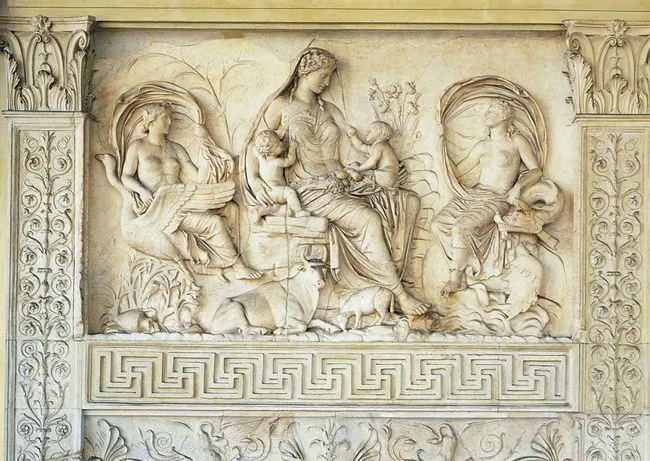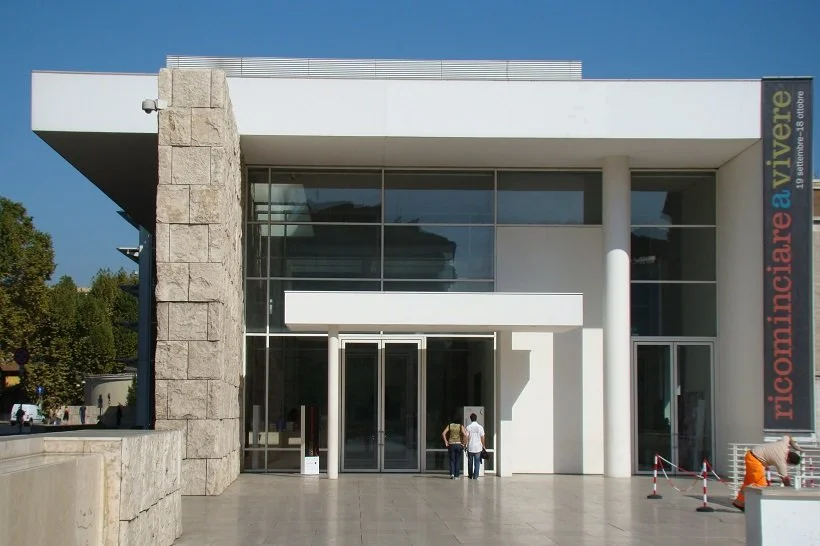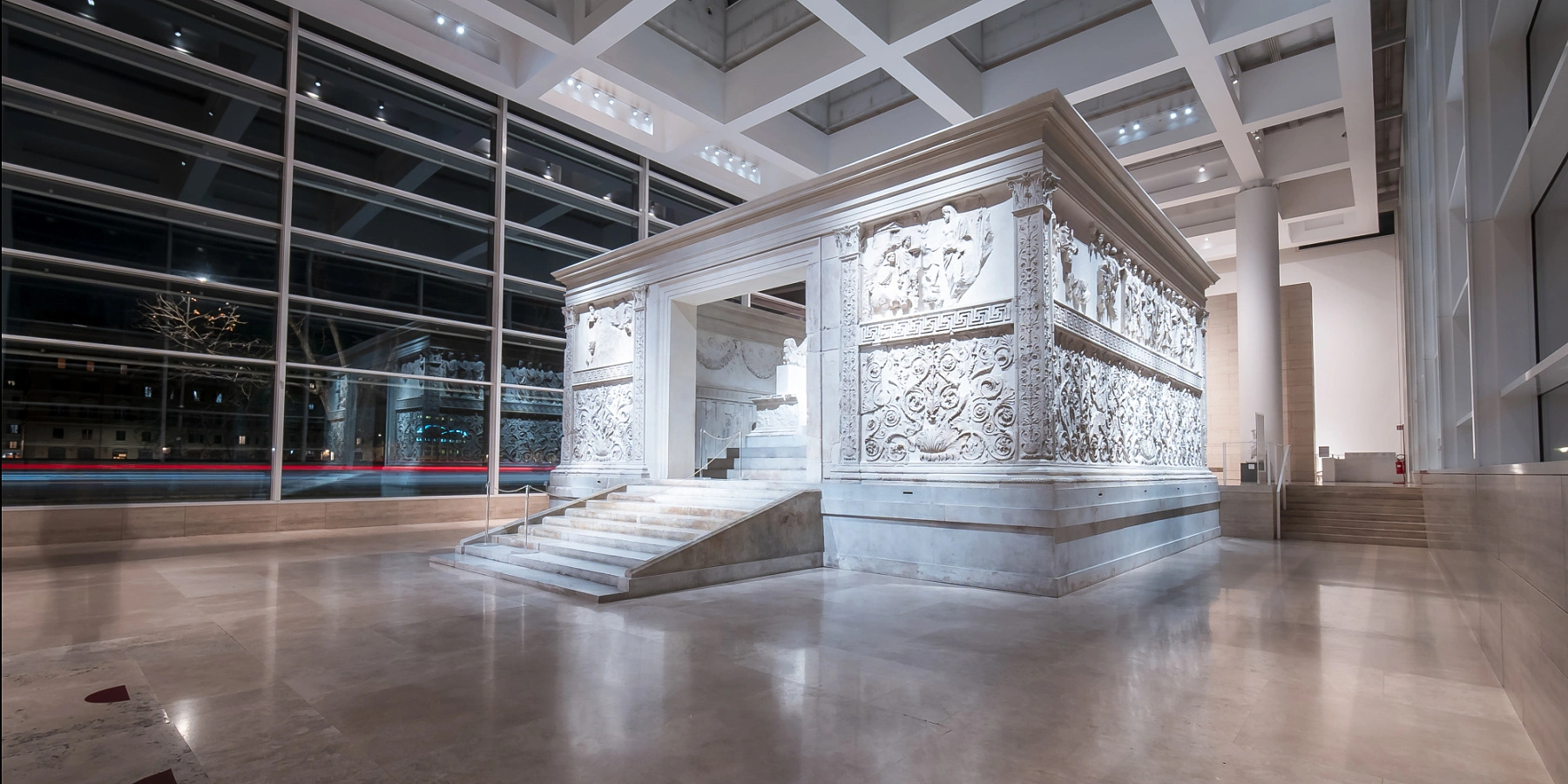When you walk through Rome and come across the Ara Pacis, you’re facing a monument that’s much more than an altar — it’s a symbol of the imperial ideal of peace, a monumental piece loaded with political propaganda, mythology, and art. Here’s what it is, how to visit it, when to go, and some fascinating curiosities that will enrich your experience.
What is the Ara Pacis? History and meaning

The full name is Ara Pacis Augustae (“Altar of Augustan Peace”). It was commissioned by the Roman Senate on July 4, 13 B.C. to celebrate Emperor Augustus’ victorious return from his military campaigns in Hispania and Gaul.
The altar was officially consecrated on January 30, 9 B.C., coinciding with the birthday of Livia, Augustus’s wife.
The monument is dedicated to Pax, the Roman goddess of peace. Its function was both liturgical and symbolic: to serve as an altar for ritual sacrifices and to express the ideal of peace that Augustus wanted to project both within and beyond Rome..
Original location and evolution
Originally, the Ara Pacis stood in the Campus Martius (Field of Mars), west of the Via Flaminia, in an area devoted to public celebrations and rituals.
Over time, flooding from the Tiber River and urban transformations buried it partially. In modern times, it was rediscovered through occasional findings and excavations spanning four centuries of archaeological work and restoration — with a decisive push in 1938.
In 1995, the modern building that now houses it was inaugurated, designed by architect Richard Meier. The protective structure preserves the monument from climate and pollution damage.

Hop on the Rome City Tour and live history at every stop! 🚌✨
Get off at Stop 6 – Città del Vaticano & Sistine Chapel, explore the surrounding area full of art and culture, and take a walk to the stunning Ara Pacis.
👉 Get your ticket today and discover Rome at your own pace!
What to see inside the Museum of the Ara Pacis
Inside the Museo dell’Ara Pacis, the centerpiece is, of course, the altar itself. You’ll also find interpretative materials (panels, videos, audio guides) and temporary exhibitions that help contextualize its artistic and political significance.
The marble reliefs depict complex scenes: processions of the imperial family, allegories of fertility, mythological figures like Tellus (Mother Earth), scenes related to the founding of Rome, and vegetal motifs symbolizing abundance.
You can also observe how the design combines Hellenistic influences with a distinctly Roman approach, where each sculptural detail carries symbolic meaning tied to power, legitimacy, and peace.

4 Tips for visiting dell’Ara Pacis Museum
- Buy tickets in advance to avoid queues, especially during high season.
- Plan your visit right before or after nearby attractions (Piazza del Popolo, Mausoleum of Augustus, etc.).
- Don’t just admire it from outside: inside the pavilion, you can walk on platforms, observe the reliefs up close, and make use of the interpretative resources.
- Wear comfortable shoes, as the area is perfect for walking along the riverbank and nearby streets.
Is the Ara Pacis worth visiting?
It depends on your interests. If you’re drawn to Roman art, classical sculpture, and the way power was represented in Imperial Rome, the Ara Pacis is a valuable stop. The reliefs are richly detailed, and Meier’s pavilion creates a calm atmosphere for contemplation.
However, some visitors find the visit relatively brief and, compared to other free Roman gems (churches, squares, basilicas), feel that the entrance ticket may not offer as much value.
To make the most of your time, consider including it in a thematic route that covers a walk along the Tiber, the Mausoleum of Augustus, the Vatican, or the Pantheon.
.png)
The Ara Pacis Rome is a discreet yet fascinating jewel — an altar turned museum that encapsulates in marble the Roman Empire’s ideal of peace and Augustus’s political ambition. With good planning, your visit can be deeply rewarding.
If you include it within a broader itinerary of Rome, it becomes even more valuable. For instance, a guided tour that combines the Vatican, imperial squares, and other landmarks can naturally incorporate the Ara Pacis.
Don’t forget to check the Roma City Tour routes to see which ones pass near the monument!


